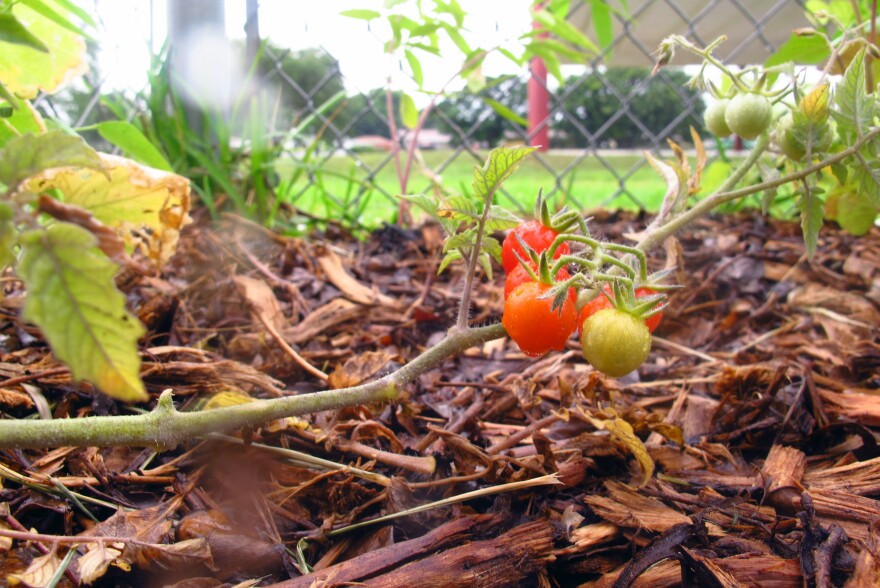Rain is terrible when you’re trying to give tours of your new garden.
But it’s great for the spinach, sweet potato and purple passion fruit rapidly taking root.
On a very rainy day, Kelsey Pharr Elementary third graders Ronnield Luna and Jeffrey Arroyo are showing grownups around what used to be a grass field.
Now the school in Miami’s Brownsville neighborhood has several thousand square feet of all kinds of fruit and vegetables.
Some you can find at your supermarket.
“And here we have lemongrass," Arroyo says. "When you rip a little piece and you smell it, it smells like lemon.”
Other produce is more exotic.
“And here we have the Moringa, the Moringa tree," Arrroyo says. "It’s the healthiest plant ever and it has protein."
"It makes you live longer," Luna adds
Students at ten other Miami-Dade elementary schools also will soon be eating kale, tomatoes and guava they grow themselves.
In a couple of years, the banana and jackfruit trees will be ready too.
The gardens -- dubbed “food forests” -- are part of a program to teach kids to eat more healthy and to teach them the science of farming and nutrition.

The project is run by the The Education Fund, a nonprofit which supports Miami-Dade schools. They chose neighborhoods where students depend on the schools for meals.
At Kelsey Pharr, ninety-nine percent of students receive free or reduced-price school lunches. It’s one of nine schools growing a new food forest.
The Fund’s president Linda Lecht says they recruit teachers at each school to manage the gardens. And professional gardeners advise the schools, because a project like this really requires a green thumb.
“We’ve tried to go into schools and plant gardens as volunteers, but they die," Lecht says. "And we really want children to learn more about food and where their food came from.”
Schools have emphasized nutrition for ages, but new federal lunch requirements have forced them to include fruit and vegetables at every meal. And Florida emphasizes Sunshine State produce.
Alena Sheriff teaches at Twin Lakes Elementary in Hialeah -- the school with the first food forest in the County. She says it's easier to convince kids to eat veggies they raised themselves.
“We have a thing at school we call taco salad,” Sheriff says. "We walk around around and pick a variety of the leaves, the greens, and we roll it up and stuff it all in your mouth. And that’s taco salad.”
But the food forest is also a way to teach students about the science of farming and nutrition.
"To have that connection from the textbook to nature," Sheriff says.
Sheriff uses the food forests for lessons on climatology, chemistry and biology.

“As a matter of fact we had a colony of ladybugs," Sheriff says. "And we watched the process of them coming out and eating the aphids on the tree and then developing and growing into ladybugs and then flying off.
"I mean, that’s awesome. How many students get that opportunity?”
The produce grown at Kelsey Pharr Elementary isn’t ready yet. But the school is giving students and their families a preview.
For now, they get a bag of fruit and vegetables grown at Twin Lakes Elementary School. Today it’s mixed greens, kale and Cuban oregano, a thick-leaved version with a sharper, spicier flavor than regular oregano.
About 150 families have already signed up at this school alone.
Fourth grader Eddie Byrd and his mom Sabrina Dillard are already thinking about what to do with what’s in their bag.
"You know you can season your meals with it," Dillard says. "We can make salads. He likes to eat collard greens so we have some of that."
Volunteers suggested she use the lemongrass in the bag to make tea or season rice.
"That's something new that's tryable," Dillard says.
The Education Fund has school nutrition programs in more than 50 Miami-Dade schools. Financial giant Citi provided a grant to fund the 10 new food forests.




